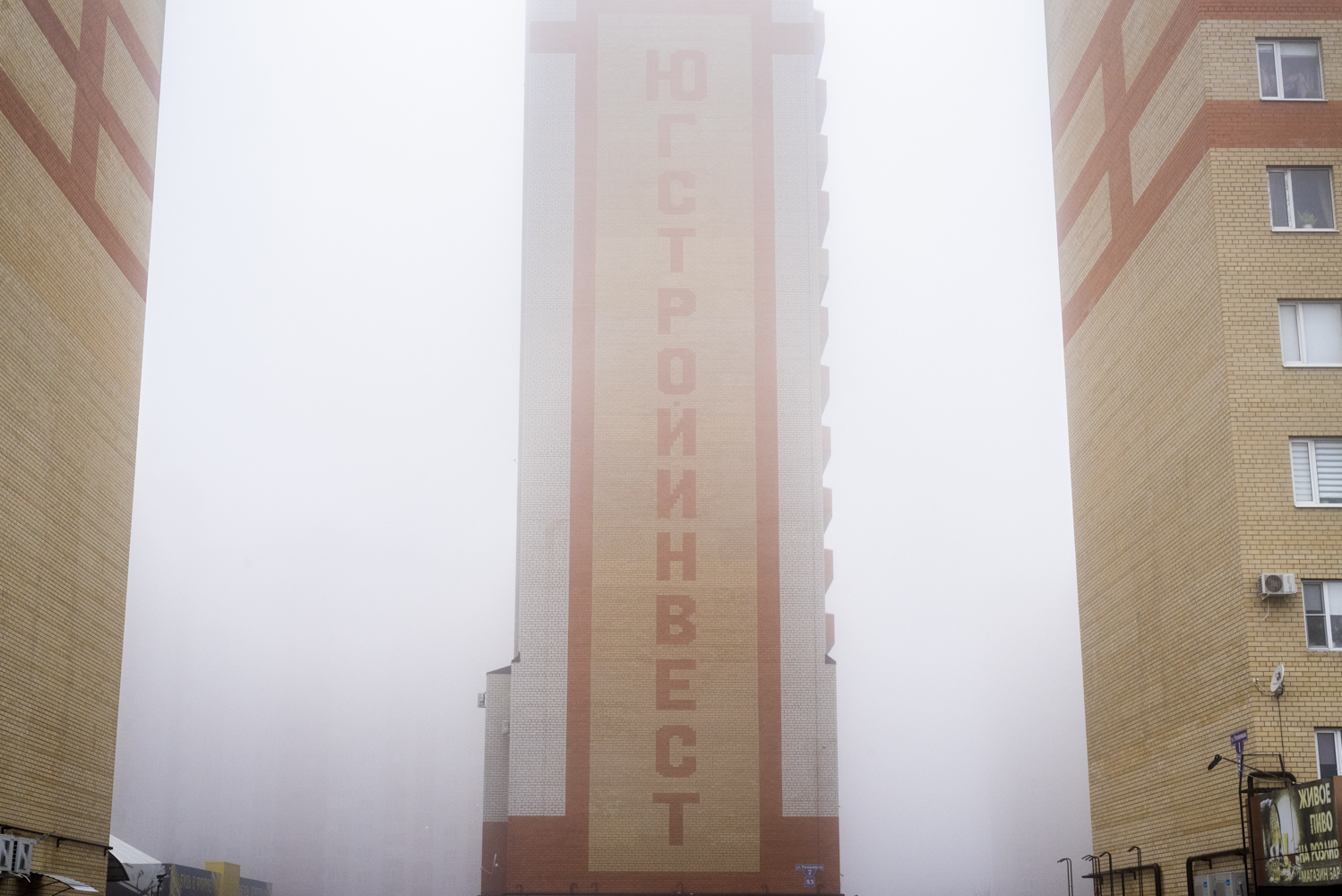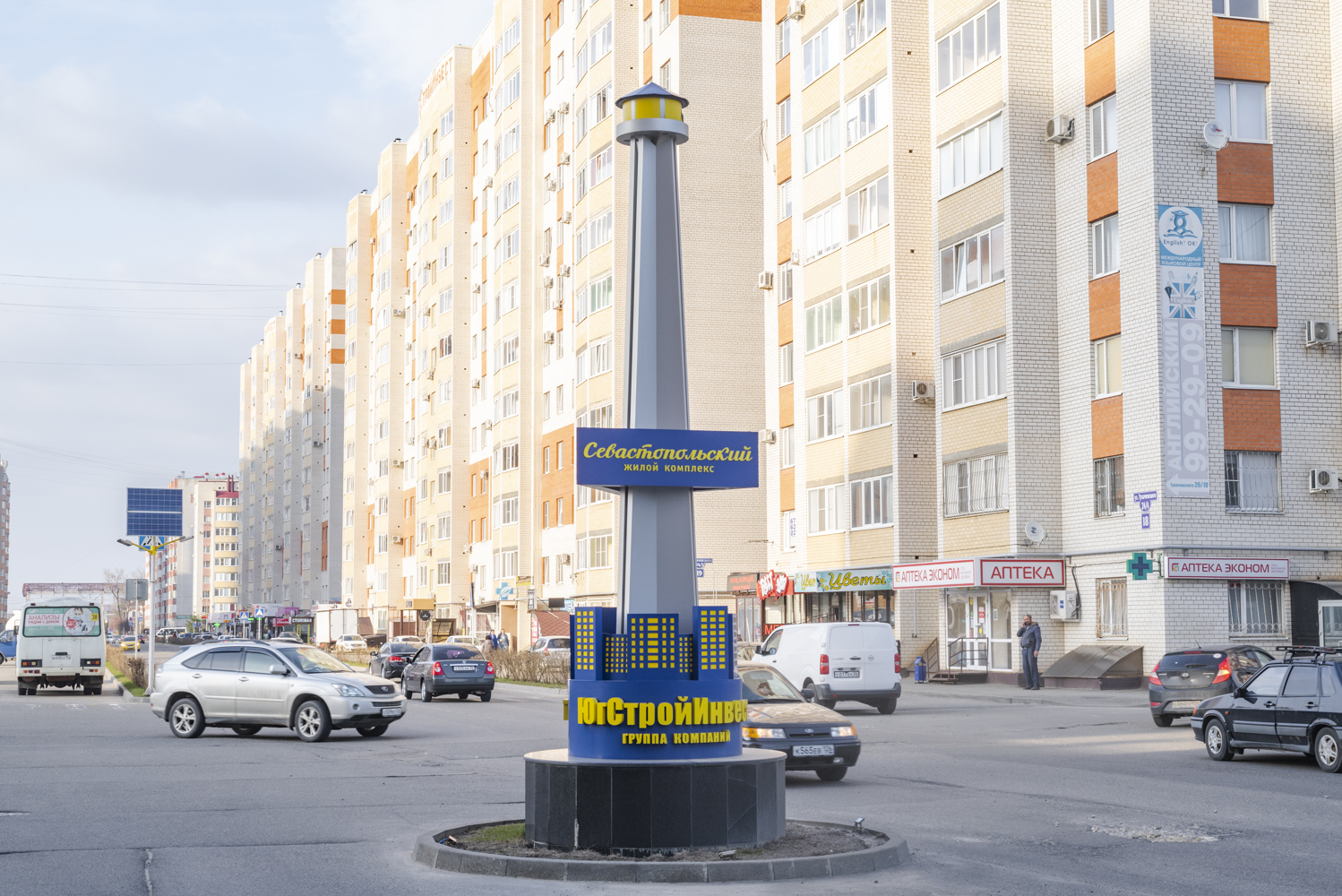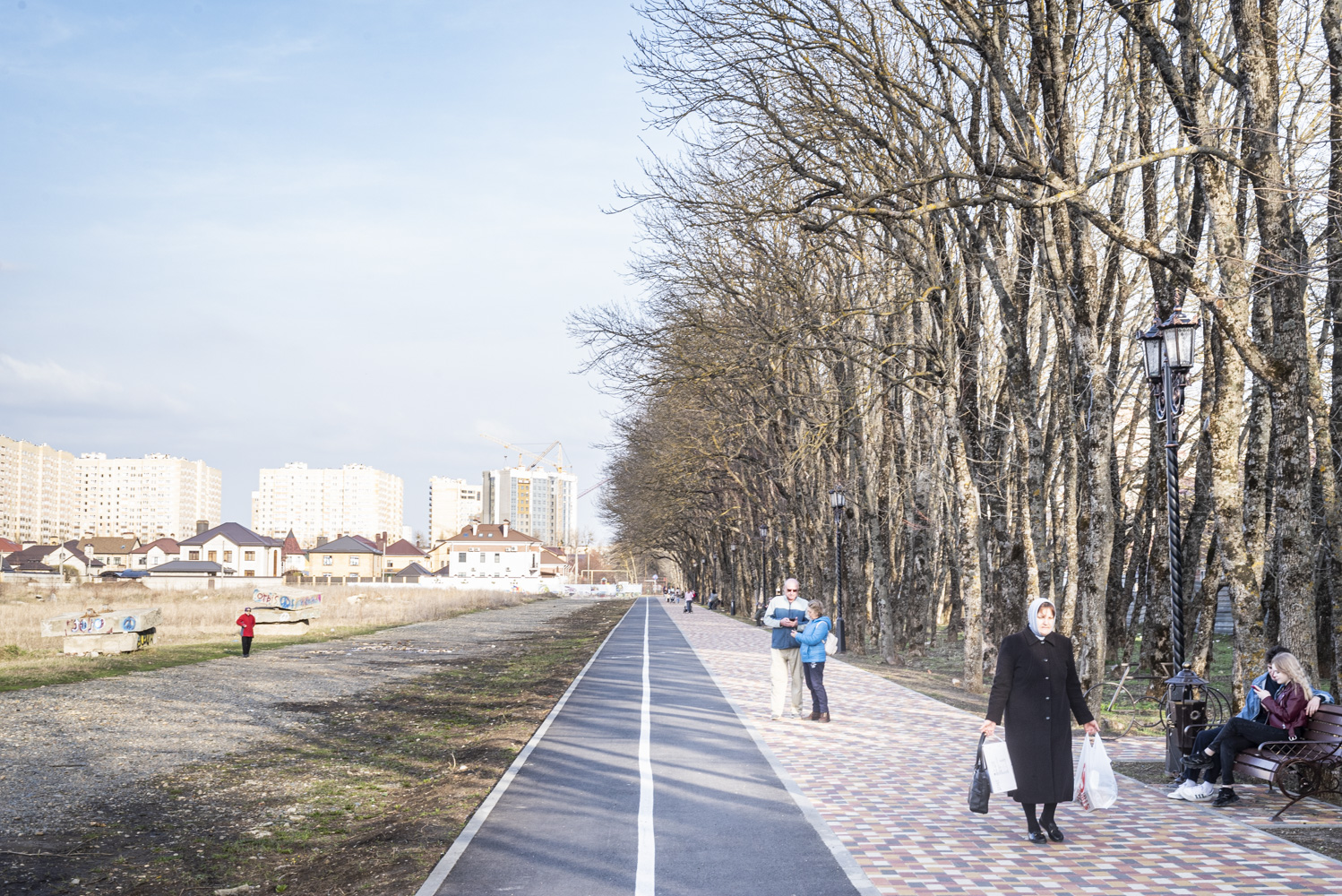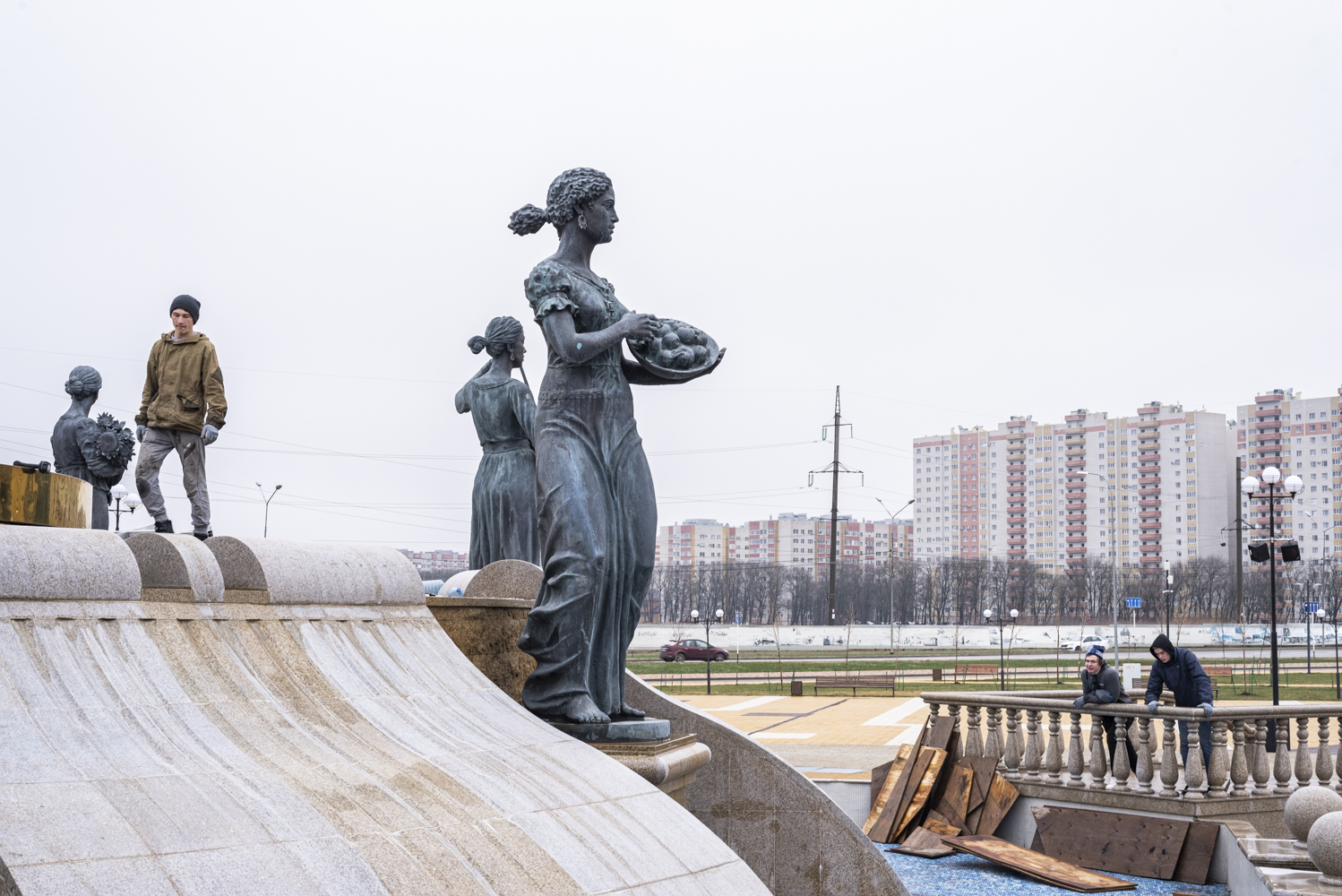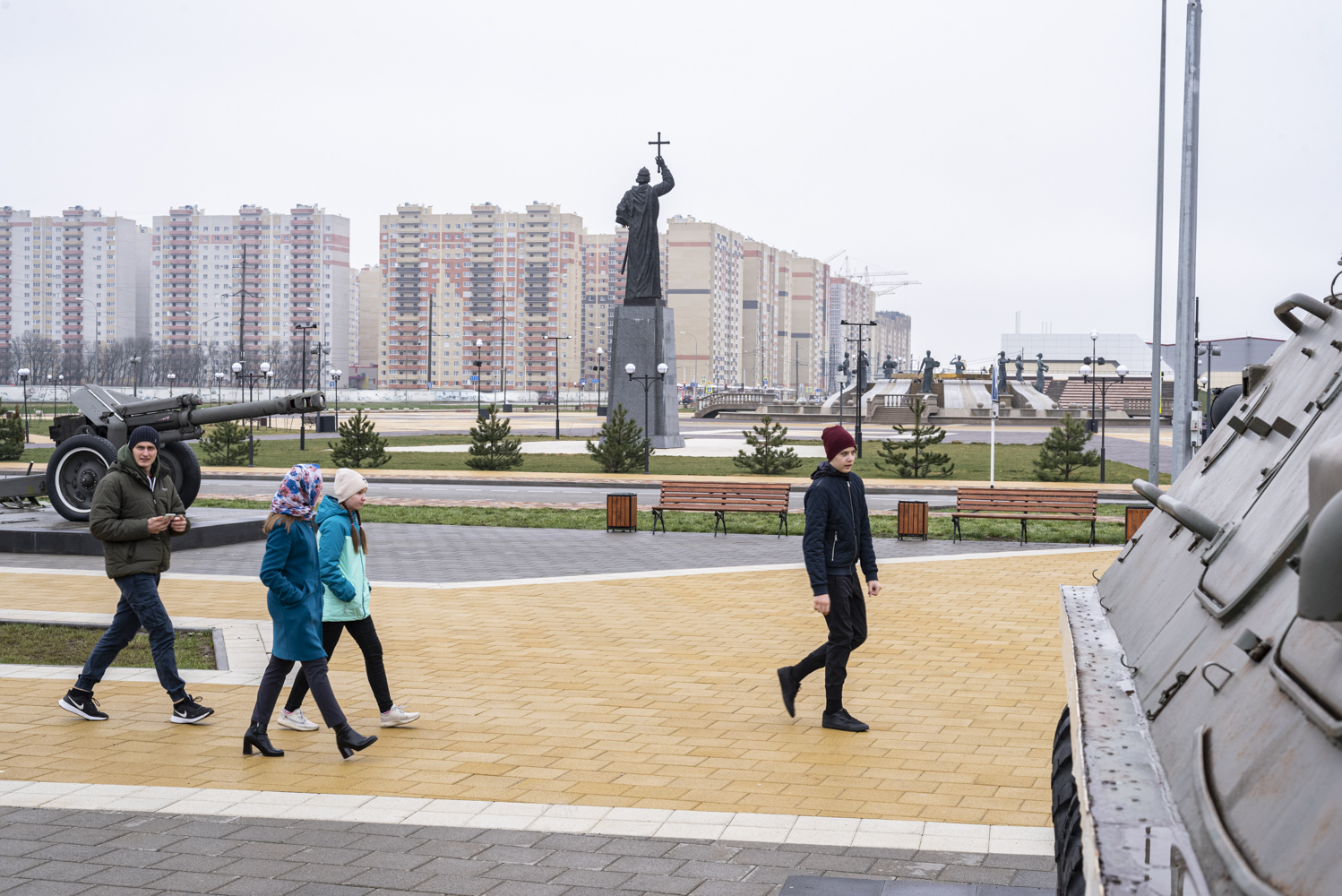« I love Perspektivny » – the trend of new districts in Russian suburbs.
In Russia, as the countryside faces rural depopulation, new suburban districts are being built to accommodate a new urban population. “Perspektivny”, in Stavropol, is the archetype of these new neighbourhoods both for its “copy/paste” town planning and for the symbols that this space reflects, and gives a better understanding of the urban changes in contemporary Russia.
Stavropol is one of the main cities in Southern Russia, and its population has increased by 25% in little more than twenty years to reach 450,000 in 2021. The newcomers from post-soviet countries and rural areas are driven by the search for better accessibility to economic activities and services. At 8 kilometres from the old town of Stavropol, « Perspektivny » – a one square kilometre district – is absorbing this flux of new arrivals proposing affordable housing. One type of urban block is replicated multiple times, forming a « copy/paste » pattern. Unlike the Khrushchyovka – early 60’s soviet monochrome concrete panelled or brick building – , Perspektivny’s buildings are colourful, yellow, orange or red.
This new district was constructed by « Yug Stroi Invest », (YSI) a local company which is operating since 2003 and is now at the top-5 of construction companies in Russia. It currently has seven new micro-rayons (districts) under construction, of various sizes, spread over the three biggest cities of the southwest region – between the Caucasus mountain range and the Ukrainian border -(Rostov-on-Don, Krasnodar and Stavropol). In « Perspektivny », YSI’s blue and yellow logo is reproduced everywhere, on every building, bus stop and school playground. Following the tradition of the USSR propaganda, applied in a capitalistic context, this insistent branding creates a dystopic environment, giving the impression that « Yug Stroi Invest » is the local authority, overpowering the usual historical and patriotic patterns that are frequently found in urban areas in Russia.
The popularity of “Perspektivny » can be explained by its capacity to offer a seemingly ideal suburban way of life to low and middle-income households. It proposes a clean and safe environment with access to many different facilities, such as medical centres, schools, parks for children and sports playgrounds for adults. This city extension, linked to the old Stavropol by roads and public transportation lines, is surrounded by a cycling path, following the trends of contemporary urbanism, aiming to promote non-motorized mobility. For people coming from rural areas and less urbanized post-soviet countries, this district is the quintessence of modernity.
Near to « Perspektivny », « YSI » is building a new upper-class micro-district, called « Rossiskii” (Russian). Each building differs from the other in size and facade and offers housing variations, which was an unconventional feature during the Soviet era. « YSI » aims to make this new area one of the main attractions in Stavropol, using public spaces to disseminate a patriotic narrative. The newly constructed museum « Russia – my history », is part of the « My history park » network, which tells the history of Russian civilization in twenty-five medium-sized cities in Russia. Nearby, the monumental fountain is promoted as the largest light and music fountain in Southern Russia, and the monumental statue of prince Vladimir, known as the Baptist of Russian civilization, stands in the middle of the main square. The north of the new district, Victory Park is dedicated to the « Great Patriotic War » (second world war). These newly constructed landmarks link « YSI » new districts to Russian collective identity.
Yuri Ivanov, the founder and director of « Yug Stroi invest », promotes himself as a local philanthropist. His significant achievement is the construction of the Vladimir church at the foot of one of “YSI” eighteen-floor building blocks. Soon after its completion, the church was given the status of a cathedral, and Yuri Ivanov was honoured by Patriarch Kirill, leader of the Russian Orthodox Church. Ivanov was born in the 1960s in Krasnogvardeyskoye, a small town situated 120 kilometres north of Stavropol. In the early 2000s, he started his construction company, when the demand for affordable housing driven by the rise of population in mid-size cities, created business opportunities in the construction sector. At the same period, Krasnogvardeyskoye, where Ivanov was born, lost attractivity and faced rural flight. The population has been constantly decreasing over the last few years, from 15,992 in 2010 to 14,721 in 2020. On Lenin Street, frozen in time, a monumental fighter plane from USSR is displayed in the garden of a local administration. On the main avenue, many houses are for sale. Daily buses to Stavropol, Rostov-on-Don or Moscow link the working population to more attractive cities.


